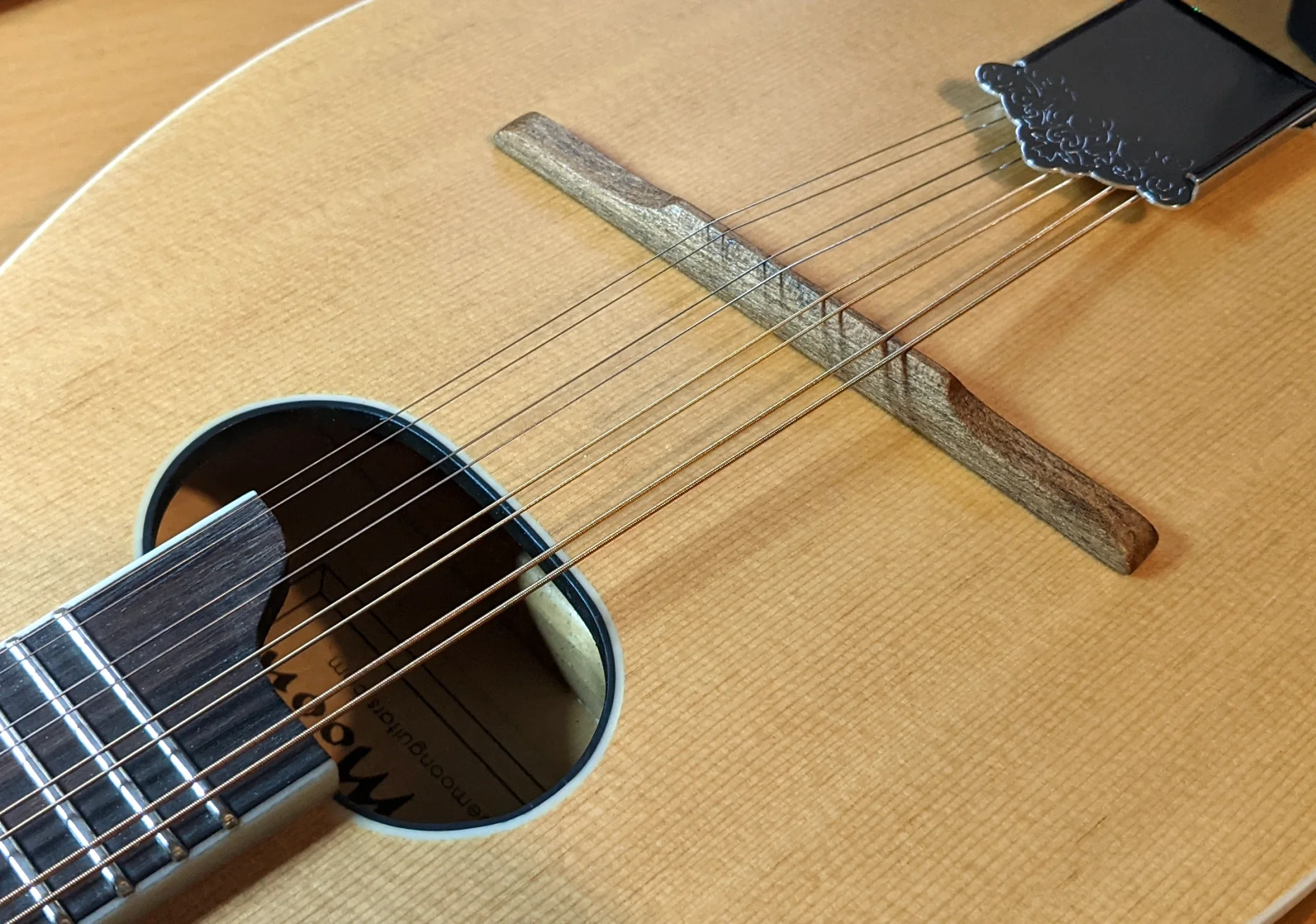Week 165: Building a bridge
In a small pub basement near Barons Court, we saw a performance of Japanese folk tales from the village of Hinohara, performed by Doubtful Sound and, just a little bit, us. We had chosen some seats at the front, so we were asked to sit in on one scene as extras and drink some sake. It was a fun and intimate performance of stories I’d never heard before. The sake was nice, too.
I did a couple of bits of mandolin luthiery. First, I replaced the machine heads on the archtop mandolin I recently repaired. I’ve been enjoying playing it, but the machine heads were rather poor. Some were loose, a couple were very tight, and while they stayed in tune well enough, adjusting the tuning was a bit more tricky. I found a set of Japanese-made Gotoh machine heads with exactly the right dimensions for a reasonable price so I ordered them and swapped them over. I had to fill and redrill a couple of screw holes that were just slightly off. That’s a trivial job, though, and completely invisible once the tuners are fitted. The new ones are a huge improvement in functionality, and the slightly smaller plastic buttons look attractive and are a little easier to turn without bashing an adjacent one.
On the downside, the posts are marginally shorter, and I have to be really exact about cutting the wound strings to length. It’s no worse than dealing with a bass guitar E string, though.
Second, I replaced the 3D printed bridge on the flat-top mandolin I previously fettled into a playable instrument. The PLA bridge was fine, and played well, but it lacked something aesthetically. I used a piece of the old table found in our loft and I decided to make it a bit longer, because the bridge sits between the braces and exerts quite a force on the top.

The new wooden bridge
Although the top is nominally flat, there’s actually a significant convex curve, so to fit the bridge I roughly sawed a concave base, taped sandpaper to the top of the instrument, and laboriously sanded the bridge until it fit perfectly.
Then I tweaked the height and … oops. I went too low. So I sawed a few mm off the top of the bridge, levelled it, and glued on a scrap of wood. The next day, I reshaped the bridge, and this time I did a better job of setting the height. The join between the two pieces is invisible, so I’m happy with the result.
When I was satisfied with the shape and height, I gave it a couple of coats of Tru-Oil. It looks a bit more attractive in real life than the colours come across in the photograph, and I expect it will darken a bit with time.
But what does it sound like? Slightly sweeter and less brittle, perhaps. I don’t know whether that’s due to the material or the shape: to the best of my knowledge, no one has done any research into the effect of bridge length on tone. It’s still just as loud, I think.
We finished watching True Detective: Night Country. I guessed how they died, but who came as a surprise. I didn’t think the mysticism fitted entirely comfortably into the story, but it was entertaining.
A few links this week:
- Transport for London’s Corporate Archive, hosted by Google Arts & Culture.
- As Japan enters recession, some young workers are leaving Tokyo to earn more in Australia.
- On the matter of the British Library cyber incident. “The most important lesson to figure out is why it is taking so long to restore services.”
- Behind F1’s Velvet Curtain. “If you wanted to turn someone into a socialist you could do it in about an hour by taking them for a spin around the paddock of a Formula 1 race. The kind of money I saw will haunt me forever.” So good they took it offline.
- AI Videos: Creepy, Boring, Remixed. “Soon, AI videos will be as obvious, creepy, boring, and economically worthless as AI images.”